
The Roman Emperor Diocletian, who became the first Roman emperor to abdicate the position voluntarily on 1 May 305 due to his ill health, built the Diocletian Palace as his residence after retirement between 295 and 305 AD in the Roman province of Dalmatia near the town Salona, renamed Solin, where he spent time in his youth. Covering an area of 3 hectares (30,000 sq m), the huge complex was built as an Imperial city palace and a sea fortress, as well as a country house of vast proportions and magnificence.
Although Diocletian lived on for four more years and died on 3 December 312, the palace complex remained under the possession of the Roman court, providing shelter to the expelled members of the Emperor's family. As time rolled on, the inhabitants of the nearby ruined city of Solin started to take refuge within the parameter of the palace and build their homes, using the old walls and columns, even the ornamentation into their new structures. However, although the vast complex was ruined, the palace is well preserved with all the most important historical buildings in the centre of the city of Split. Today, the ruined complex has become the heart of the city with 220 buildings within the palace boundaries, home to about 3000 people, and its winding streets are packed with people, bars, shops, and restaurants.
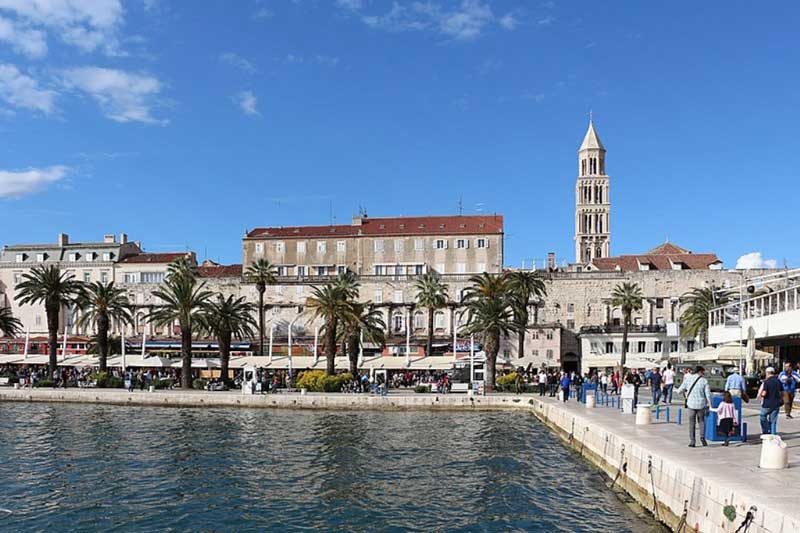
Today, it is difficult to imagine that once the lower tier of the Diocletian Palace was covered with water, and the ship of the Emperor used to pass slowly between the columns and stopping among the vaulted rooms of the lower tier, as the emperor wanted to enter his palace on a ship, without leaving the deck.
The palace was constructed in the form of an irregular rectangle with sixteen towers projecting from the western, northern, and eastern facades facing the mainland. However, there was no tower in the south, which was unfortified as it rose directly from or very near to the sea. The north-south outer walls, measuring 705 feet (215 m), were constructed with 72 feet (22 m) tall and 7 feet (2 m) thick walls on the Adriatic side and 60 feet (18 m) high on the north. Each cardinal side of the walls was equipped with a monumental gate in the middle, leading to an enclosed courtyard.
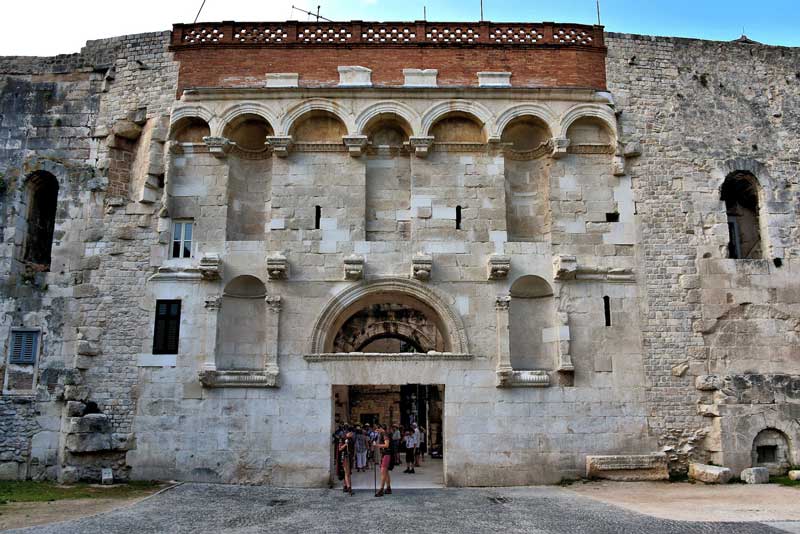
Porta Aurea, the north gate, through which Diocletian entered the palace on the 1st day of June 305, was built in the shape of a rectangle. Known as the Golden Gate, it leads through Cardo Street to Salona, the then capital of Dalmatia, and was restricted for the exclusive use of the emperor and his family. In the 7th century, a church dedicated to St Martin was built above the gate.
Modest in its decorations than the Golden one, Porta Occidentalis, the western gate was used to enter the palace from the east towards the west, through the main street, Decumanus Maximus. Known as the Silver Gate, it was originally a military gate, from which troops entered the complex. Thoroughly reconstructed during the destruction of the Baroque church Dušica, it is the only gate that remained in continuous use to the present day. Entering through it, one can see the remains of the octagonal towers on both sides of the gate. Originally, a relief of Nika, the Roman Goddess of Victory stood on its lintel, which the Christians removed in the 5th century and engraves a Cross in its place. Later, a small church dedicated to St Teodora was also built above the gate in the 6th century.
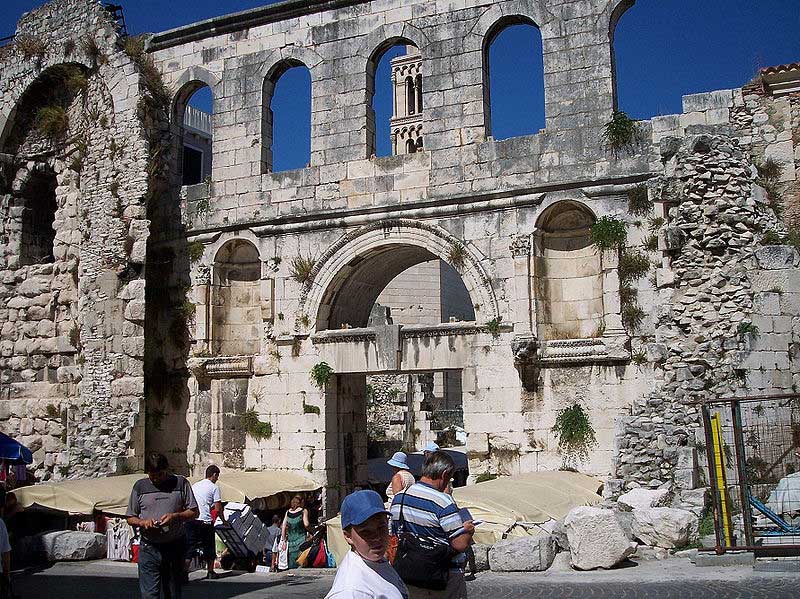
Originally a secondary gate, the Porta Orientalis or the Iron Gate is the eastern gate facing east towards the Roman town of Epetia, today Stobrec, on the Adriatic Sea in central Dalmatia. Possibly in or around the 6th century, a small church dedicated to St Apollinare was built above the gate in the sentry corridor. The gate remained in operation as a city gate with a guardhouse, even after the expansion of the city from the palace to the west.
Porta Meridionalis, the southern gate, the smallest of the four principal Roman gates into the Palace, is known as the Bronze Gate. Though modest in size, its function was different as it leads through the Substructures directly to the sea. It was built as a sea gate from which the Emperor entered the complex, through the basement rooms in the Imperial Palace.
Probably, the churches over the gates later acted as the catalysts to the influx of the inhabitants of the nearby ruined city of Solin within the palace complex. The imperial residence on the southern side, with its staterooms and temples, was separated from the northern side by Decumanus, a straight road between the eastern and western gates, and was once used by soldiers and servants.
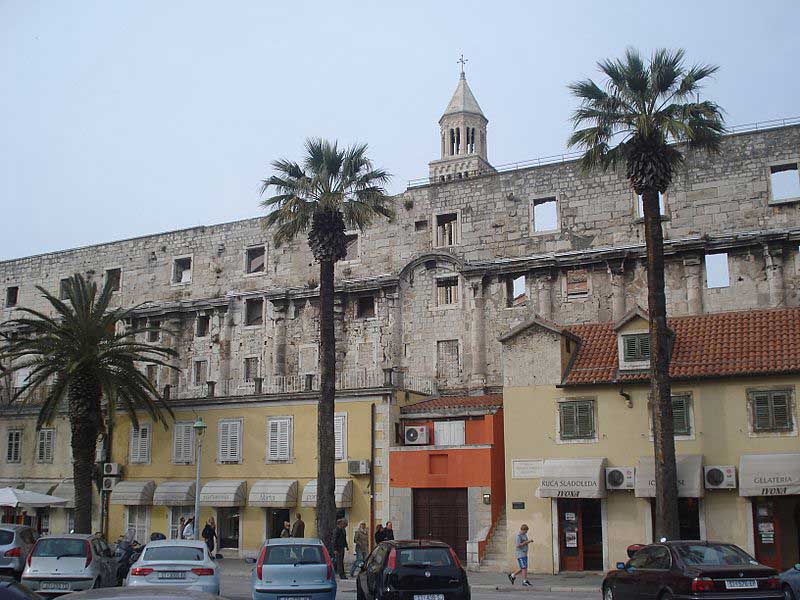
The Imperial Palace is an irregular rectangle measuring around 705 feet (214.97 m) in the east, 574 feet (174.74 m) in the north, 594 feet (181.65 m) in the south, and equipped with four large towers at the corners, doors on each of the four sides and four small towers on the walls. The massive lower part of the façade walls is without openings, while the upper floor is exposed with a monumental porch on the south and halls with grand arch windows on the other sides. The Emperor’s apartment, with a circular floor plan and crowned with a dome, formed a block along the seafront. Interconnected by a long room along the southern façade, it has 42 windows and 3 balconies, providing a clear view of the open sea. Built of local limestone and marble, the palace was decorated with several granite sphinxes, procured from the site of the Egyptian Pharaoh Thutmose III. Unfortunately, only three of them survived to date. While one of them is housed in the city museum, another one is still on the Peristyle, the centre square of the palace. The headless third sphinx sits in front of the Jupiter’s temple, located in the court.
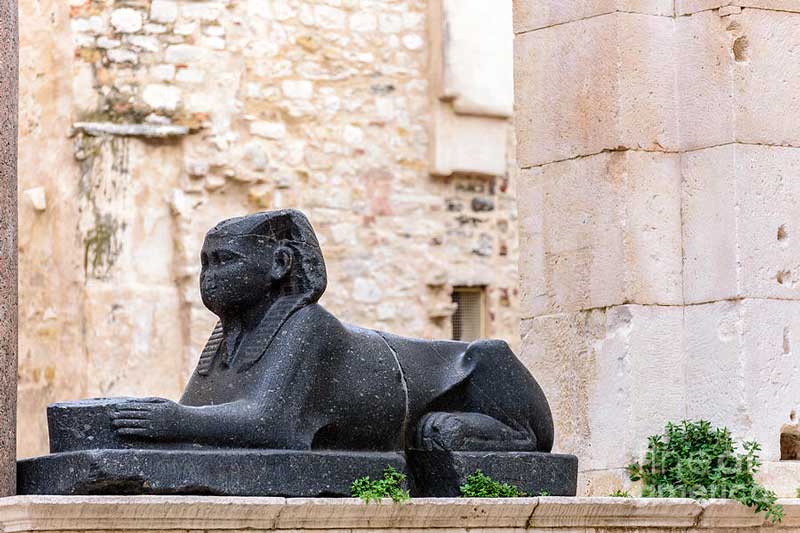
Peristyle is a rectangular open court decorated with a colonnade, where the Roman citizens once gathered and waited in kneeling position for the appearance of Emperor Diocletian, celebrated as the living son of Jupiter. Since the period of Emperor Diocletian, the colour purple became the imperial colour, and the red colour of the granite columns of the Peristyle emphasized the ceremonial function. The Peristyle connected the Diocletian's mausoleum on the East to the three temples on the west. While two of the three temples are lost, the third, the Jupiter’s temple, built between 295 and 305, was probably turned into the Baptistery of St John the Baptist in the 6th century, when the crypt dedicated to St Thomas was also built.
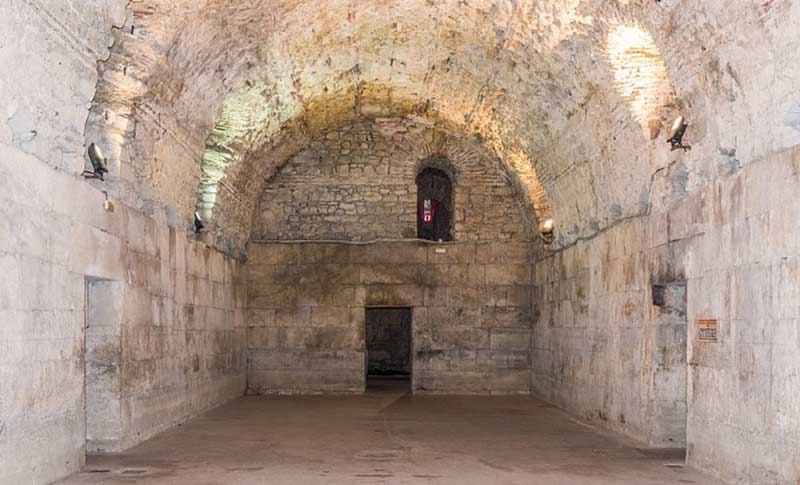
The subterranean portions of the palace, known as the cellars or the basement halls, featuring barrel-vaulted stonework, represent one of the best preserved ancient complexes of their kind in the world. While they acted to elevate the Emperor's chambers on the floor above, they were also used as the storage area for the Palace. Apart from that, a portion of it was used as a residential area in the early middle ages.
Today, considered as the most preserved area of the palace, the substructures are still full of life. They host events like the International Flower Fair, painting and sculpture exhibitions, and theatrical performances, along with many other social and cultural programmes. They become particularly alive and attractive during the evenings, when the actors in Roman togas perform with their resounding solemn voices, echoing under the arches of the ancient palace. Illuminated by the garlands of colourful lights, the palace, with its marble and granite columns, topped by Corinthian capitals, looks like a dream at nightfall.
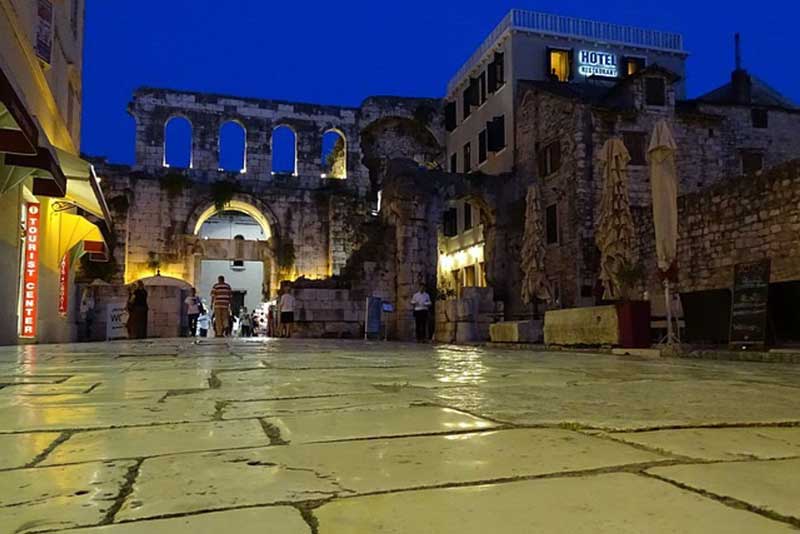
The Diocletian Palace, designated in 1979 as a UNESCO World Heritage site, constitutes the core of the historic Split.